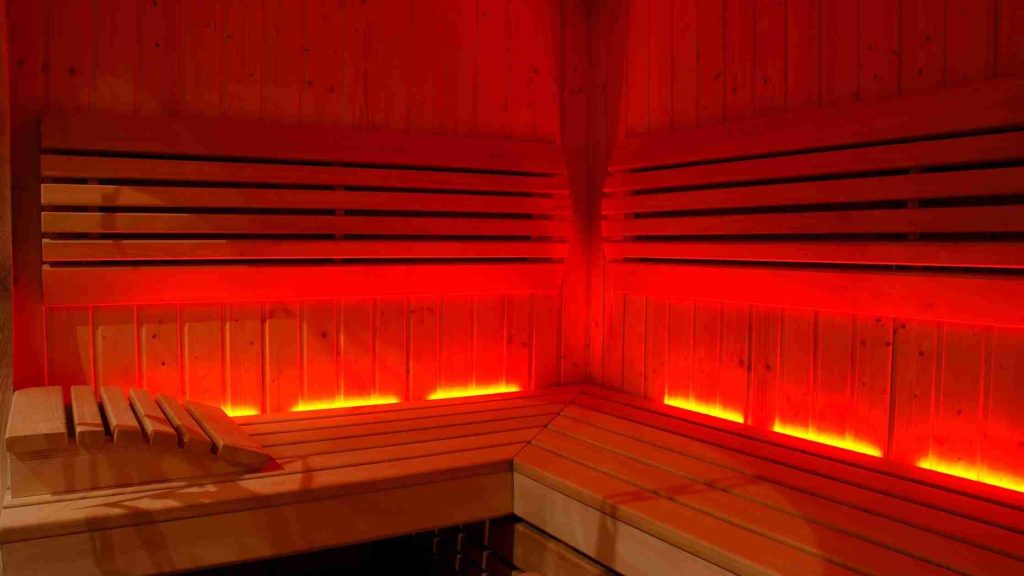The use of infrared and red light treatment has grown significantly recently. Both therapies use light energy to potentially offer a range of health benefits like weight loss, anti-aging effects, pain relief, etc. But is red light therapy the same as infrared?
Nowadays, many people are confused about RLT and infrared as well as how they might work to your advantage. Hence, we have researched and created this article for that purpose.
Let’s get started and discover more!

Source: corrective-chiropractic.com
Is Red Light Therapy the Same as Infrared?
Red light and infrared therapy aren’t the same, and they have differences. Red light is common in beauty tools, spas, and wellness centers due to its many possible benefits for the skin. It is a non-thermal, chemical-free method and only works on the surface of your skin.
At the same time, infrared light penetrates more layers and acts from within your body using warmth. It might focus on pain relief and detoxification by making you sweat all the bad stuff.
While you may be confused and ponder if red light and infrared are the same, our article highlights below each benefit of the two. Their joint forces have possibly given the best results in anti-aging treatments, pain relief, and relaxation.
You might find many satisfied users, including beauty experts, bloggers, and dermatologists, who use a combination of both wavelengths. They might usually work great in improving skin texture and circulation.
Using red light therapy has shown no significant adverse effects so far. It is a safe, non-invasive technique that might improve blood flow and supply oxygen to your cells. Depending on your issue, you can choose between these two similar, highly effective light therapies.
Your health provider should help you make an informed decision. Always consult with a professional and invest in a high-quality product.
The presence of light
The light’s presence might affect your body positively, for example, by providing you with vitamin D. Scientists are working to find the perfect methods of using red light and infrared therapies that might aid numerous conditions.
Now, let’s take a look at a more detailed perspective of the differences between the two fantastic therapies.
Difference Between Red Light and Infrared Therapy
Red light therapy
Although it may sound controversial, red light therapy has been successfully implemented in science and medicine for a long time.
The scientist Niels Ryberg Finsen researched red light wavelengths in the 90s and successfully used them to treat smallpox, which earned him a Nobel Prize in 1903. NASA scientists used it to grow plants in space, and soon after, many other purposes of red light were tried and tested.
Today, people mostly use it to possibly improve their skin, as a pain reliever, and as a mood enhancer. You can also find it in spa centers and saunas.
Let’s begin by explaining that each light has a particular wavelength and effect on one’s body. Red light is a safe, visible light that doesn’t penetrate your skin very deeply. Thus, it might be perfect for dermatology-related issues.
The red light range of frequency is 630–700 nanometers (nm), which is the appropriate amount your cells can absorb. Red light’s interaction with your cells might stimulate them and boost rejuvenation and blood circulation.
Forget about harmful UV rays; this may not burn your skin and only replenishes the surface of it with enough energy for it to function.

Source: truenorthsaunas.com
Possible benefits
While there’s still a lot of research on the RLT benefits, years of studies and experience have shown possible positive results. Some of the benefits of these wavelengths include:
- Possible reduction of wrinkles, sun damage, and aging.
- It might promote hair growth and reduce hair loss.
- The increase in collagen might help with arthritis.
- It might reduce breakouts and acne.
- It might decrease inflammation.
- It might positively affect stretch marks and scars.
- It might improve eczema and psoriasis.
- It might prevent cold sores.
- It might improve overall mood.
Infrared therapy
One of the fascinating things about infrared is that although you can’t see it, you can still feel it in the form of heat. When your body receives energy in the form of heat, it means this energy penetrates deeper into your body.
Infrared light reaches the muscle tissue since it sits at 800 to 1,000 nm on the electromagnetic scale. It might help flush out toxins and induce a mild fever in cancer patients, so many doctors recommend visiting an infrared sauna.
The muscle tissue absorbs this light, and as a result, it might work more efficiently. Thus, infrared therapy might be used to heal muscle inflammation, relaxation, and weight loss stimulation. Many athletes might use it to possibly heal their aching muscles and improve stamina.
You should check with a dermatologist or a doctor to find the right length and amount of infrared light for you since using too much may be damaging.
Possible benefits
The research is ongoing, but there’s still the fact that using infrared light might have many benefits for healthy people. Here are some of them:
- Possible relaxation.
- It might help with skin improvement.
- It might help with pain relief.
- It might promote blood circulation.
- It might reduce muscle tension and boost healing.
- It might minimize chemotherapy side effects.
- It might help with allergies.
- It might promote weight loss.
Conclusion
Well, we have come to the very end of this article. So, let’s recap: is red light therapy the same as infrared? The answer is no. While the red light might only affect the body surface, the infrared light works deeper and might increase body temperature.
Remember, you should always consult your health provider before utilizing any medical treatment or modern therapy due to possible adverse effects on your health!

Hello! I’m Nicky Rodgers.
Almost a decade ago, I got excited about the idea of employing alternative methods like red light therapy to create a healthier life.
To learn more about it, I did my Certified Light Therapist course from Photonic Therapy Institute and started looking into the intricacies of how light therapy influences several bodily processes. Before I knew it, my interest had become an obsession which resulted in this extensive blog.
Here, I offer countless well-researched articles to help you understand the benefits and uses of light therapy. I hope this information gives you a head start in your wellness journey.
